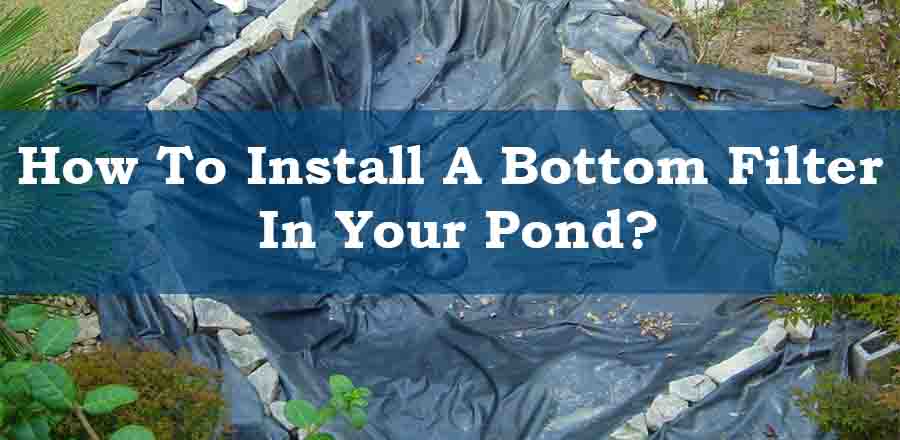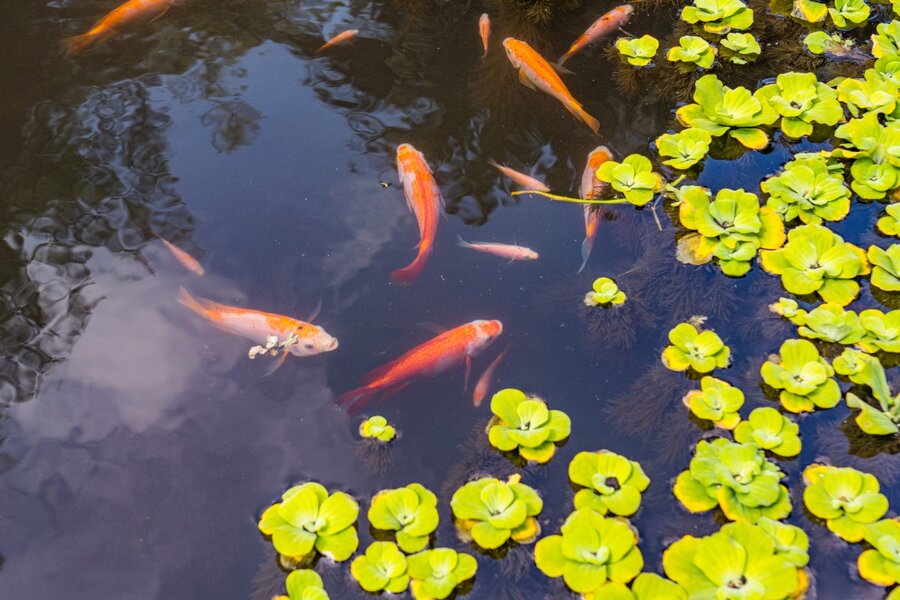
If you are a pet fish keeper and you like to keep your pet fish in a pond, you have to change the water of your pond after a certain time. Most of the time it becomes tough to change the water and cleaning the dirt from the pond. There are two types of filtration for your pond they are
- Mechanical filtration for a large amount of waste.
- Biological filtration for chemical waste.
A bottom filter is an equipment that can be combined with mechanical filtration. In this article, I will be discussing the installation process, working procedure, and benefit of a bottom filter.
Table of Contents
What Is A Bottom Filter?
The bottom filter is known as a bottom drain also. It sucks in the garbage like old leaves, rotten algae of the pond while it ensures the pond is vacuumed. You can expect that a bottom filter will be collecting the dirt when the fish are present in the pond.
Bottom drains are highly efficient due to their ability to ventilate while rapidly reducing maintenance requirements. It’s an efficient way to cleaning and processing the dirt off your pond. It is a low time-consuming way of cleaning your pond also.
How Does A Bottom Filter Work?
A bottom filter generally follows the gravity flow mechanism. It takes advantage of the gravitational force to clean the dirt from the pond. It works without harming the fishes of a pond.
It has an excellent liquid flow rate, and its effectiveness increases after adding a oxygenate system. The bottom filter appears in different sizes, that ranges between 8 to 10 inches. It is driven by a suction pump, then it is connected to a mechanical filter and a biological filter to filtrate the removed water from the pond.
How To Install A Bottom Filter?
Follow the following steps to install a bottom filter –
- First of all, you have to dig a hole in the deepest section of the pond.
- Then you have to make a perfectly balanced slope at the bottom of your pond so that the dirt can easily move towards the bottom filter or bottom drain.
- Then you need to dig a trench or a drain for the settlement of the pipe which leads to the tank.
- Now set the liner (will be acting as a rubber gasket) and cut a hole of a geosynthetic around the drain.
- Before making the drain, you have to arrange enough liner around every side of your pond.
- Now make a cross “X” shape cut over the sump for your bottom filter.
- Before the final settlement make sure that the sump and the liner are clean and dry.
- Now apply some glue on the sump, then place it with liner and make them flat without any wrinkles.
- Now put the rim down and then screw it with the sump.
- Now cut the liner from the inside of the sump and then add another layer of glue and your bottom filter for your pond is ready.
Things to remember
When you will be setting a bottom filter for your pond you need to keep a few things under consideration. You should follow the tips listed below –
- Before installing a bottom filter determine the volume of your pond, cause the size of the bottom filter varies depending on the volume of pond water
- You have to choose the correct size of the bottom filter for your pond.
- You have to be careful about placing the bottom filter, you should not set the bottom filter near the pond wall.
- You should take care of the funnel action as the bottom filter will be laying on the deepest point of your pond.
- You should place the pump in a dry place.
Why you should install a bottom filter?
The bottom filter or bottom drain in a fish pond is becoming popular because it has many advantages. The advantages you will get from the bottom filter are listed here-
- First of all, it will help you to clean your pond within a short time.
- A bottom drain or bottom filter can clean your pond more precisely and efficiently.
- You can assure the good health of your fish by installing a bottom filter.
- A bottom filter cleans all the dirt off, so your pond water will be bacteria-free.
- It will allow you to clean the bottom of your pond frequently.
- The one-time installation cost of the total filtration system, so it will be cost-effective.
Which bottom filter to buy?
You will find a different bottom filter on the market; you may get confused about which one you should buy? Let me help you to choose the best type of bottom filter for your fish pond. They can be categorized into two types, they are –
- Aerated and Non-aerated bottom filter.
- Bottom drainage and pump framework.
Now we will be discussing these two categorized bottom filters.
Aerated and Non-aerated bottom filter
Aerated and non-aerated both the filters can collect the dirt from the bottom of your pond. But the main difference comes here, the aerated bottom filter is capable of cleaning the dirt as well as they can provide good aeration system. But the non-aerated system doesn’t have this advantage.
The aerated filter is costly compare to the non-aerated filter. If you are looking for a cheap filter then you can go for the non-aerated filter. If you want to spend money on the good bottom filter and you want your fishes to be in a happy environment you can go for the aerated bottom filter.
Bottom drainage and air pump framework
The bottom drainage system works under the gravity force, so there will be very less amount of pressure inside the drainage pipe. The larger the diameter the more dirt will be cleaned. You can take advantage of a large diameter for the drainage pipe.
On the other hand, for the airframe work you need to set another separate pipe alongside the main drainage pipe to supply air to the diffuser. In this case, you need a pipe of a smaller diameter. A large distance needs a more powerful air compressor which is costly.
